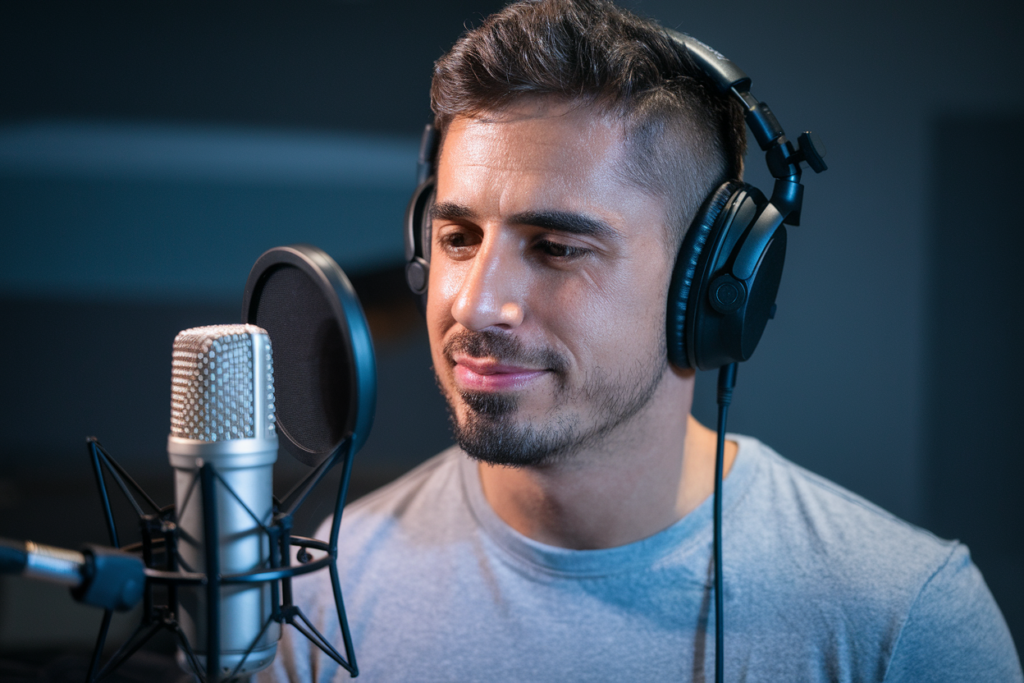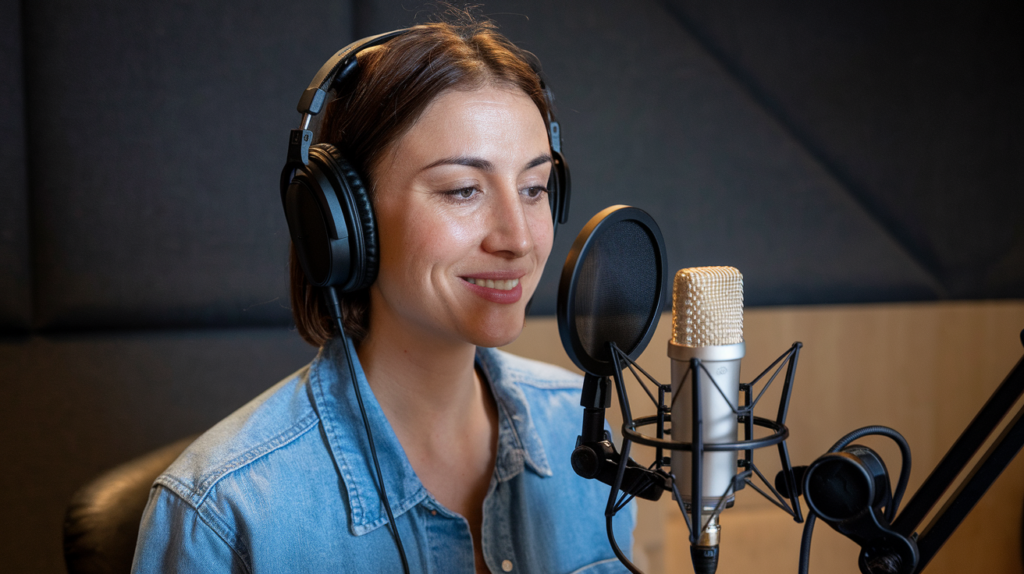Exploring the Galician language as a sound art medium opens up a world of creativity and expression. As I delve into this unique channel, I discover how Gallego transcends mere communication to become an artistic force that resonates deeply with its speakers. The rich sounds and rhythms of this language not only reflect cultural identity but also serve as a canvas for innovative sonic exploration.
In today’s globalized society, it’s fascinating to see how regional languages like Gallego can carve out their own niche in the arts. By embracing its melodic qualities, artists are crafting immersive experiences that celebrate both tradition and modernity. Join me on this journey as we uncover the vibrant intersections of language, sound, and artistry within the realm of Gallego.
Overview of Gallego Como Canal Artistico Sonoro
Galician, or Gallego, serves as a profound channel for sound art, offering unique avenues for creative expression. This language embodies more than mere words; it transforms into an artistic medium that speaks to cultural identity and heritage. Artists harness the melodic and rhythmic qualities of Gallego to craft immersive sonic experiences that resonate deeply with audiences.
The interplay between language and sound in Gallego reveals its potential in contemporary art forms. Sound artists utilize this linguistic richness to evoke emotions, tell stories, and explore themes relevant to both local traditions and global narratives. By integrating traditional elements with modern techniques, they create works that honor the past while pushing the boundaries of artistic innovation.
In a world increasingly dominated by dominant languages, regional languages like Gallego play a vital role in preserving diversity within the arts. The use of Gallego not only celebrates unique sounds but also fosters connections among speakers who share similar cultural backgrounds. Through performances, installations, and digital platforms, artists engage with their communities while inviting broader audiences to experience the beauty inherent in this regional language.
Overall, the exploration of Gallego as a sonic artistic channel enriches both personal expression and collective identity within Galicia’s vibrant cultural landscape.
Historical Context
Gallego, as a language and medium, has undergone significant evolution that shapes its role in sound art today. Understanding its historical context sheds light on how it became a vital artistic channel.
Evolution of Gallego Language
Gallego originated from Latin, evolving over centuries into a distinct Romance language. By the 12th century, it emerged as a literary language with rich oral traditions. The 19th and 20th centuries witnessed cultural revitalization efforts that fortified its use in literature and music. Recent decades show increased recognition of Gallego across various media, enabling artists to explore its unique phonetic qualities for expressive purposes. This evolution reflects broader socio-political changes within Galicia, where the language symbolizes regional identity and pride.
Role in Artistic Expression
Gallego plays an integral role in artistic expression by serving as both a medium and subject matter for creators. Artists leverage its melodic features to craft immersive audio experiences that resonate deeply with audiences. Through poetry readings, musical compositions, and sound installations, they highlight the linguistic nuances that enrich their work. Additionally, contemporary artists often address themes of heritage and community through Gallego’s lyrical potential, providing insights into cultural narratives while fostering connections among speakers. Its presence in diverse art forms emphasizes the importance of regional languages like Gallego in enriching global artistic dialogues.
Key Artistic Forms
Gallego serves as a vibrant medium across various artistic forms, enriching sound art through its unique qualities. Artists utilize this language to create profound experiences that resonate deeply with audiences.
Music and Sound Design
Musicians in Galicia harness Gallego’s melodic essence to produce diverse genres, from traditional folk music to contemporary experimental sounds. By integrating the language into lyrics and compositions, they evoke cultural themes that celebrate regional heritage. Collaborative projects often merge Gallego with electronic elements, expanding sonic possibilities while maintaining authenticity. Notable examples include bands like Berrogüetto and their innovative approach to fusing traditional Galician sound with modern influences.
Poetry and Literature
Poets leverage the lyrical nature of Gallego to craft vivid imagery and emotional depth in their works. The rhythmic qualities of the language enhance spoken word performances, intertwining sound with meaning. Contemporary poets such as Manuel Rivas explore themes of identity, nostalgia, and social issues through their verses, showcasing how Gallego can articulate complex sentiments uniquely. Literary festivals often highlight these voices, emphasizing the role of poetry in preserving cultural narratives.
Visual Arts and Performance
Visual artists incorporate Gallego into their work by using text or dialogue within installations or exhibitions. This practice creates an interactive experience where viewers engage not only visually but also aurally with the artwork. Performance artists frequently integrate spoken word components in live shows, creating immersive environments that reflect on societal themes relevant to Galician culture. Events like “Cultura en Galego” exemplify how visual arts intertwine with linguistic expression for broader cultural engagement.
Contemporary Impact
Gallego continues to shape the contemporary art scene, influencing various artistic expressions and resonating with audiences. Its integration into sound art reflects a dynamic cultural landscape that values heritage while embracing innovation.
Prominent Artists and Works
I recognize several artists who exemplify the use of Gallego in their work. Xurxo Souto, a musician and writer, combines traditional sounds with modern influences, creating compelling auditory experiences. Mercedes Peón, known for her innovative approach to folk music, blends electronic elements with Galician rhythms, pushing boundaries within the genre. The spoken word artist Chus Pato infuses her poetry with musicality, exploring profound themes through her lyrical prowess. These artists highlight how Gallego serves not just as a language but as an essential medium for artistic exploration.
Cultural Significance
I observe that Gallego plays a crucial role in preserving and promoting cultural identity within Galicia. The language embodies regional pride and unites communities through shared stories and traditions. In contemporary sound art, its rhythmic and melodic qualities enhance emotional connections among audiences. By integrating Gallego into diverse media—music, performance art, visual arts—creators foster dialogue about social issues relevant to Galicia today. This commitment to using Gallego enriches both personal narratives and collective histories while reinforcing the importance of linguistic diversity in global culture.
Challenges and Future Directions
Exploring Gallego as a sound art medium presents both challenges and exciting opportunities for the future. The preservation of this unique language alongside innovations in artistic practices is essential to its continued relevance.
Preservation of Gallego
Preserving Gallego involves addressing sociolinguistic factors that threaten its usage. Language attrition occurs as younger generations gravitate towards dominant languages, leading to diminishing fluency and cultural disconnection. Initiatives aimed at revitalizing Gallego through education significantly enhance its presence in schools, media, and public life. Community engagement plays a crucial role; grassroots organizations promote workshops and events celebrating Galician heritage. Additionally, digital platforms facilitate access to resources that highlight Gallego’s literary and musical contributions, ensuring broader awareness among audiences.
Innovations in Artistic Practices
Innovations in artistic practices using Gallego reveal new avenues for expression. Artists increasingly experiment with technology, combining traditional sounds with electronic elements to create immersive experiences that engage diverse audiences. Collaborative projects between musicians, poets, and visual artists expand the sonic landscape while fostering cross-disciplinary dialogue within the creative community. Furthermore, integrating multimedia approaches—such as video art or augmented reality—enhances audience interaction and deepens emotional connections to the themes explored through Gallego. These innovative strategies not only celebrate linguistic diversity but also position Gallego at the forefront of contemporary artistic discourse, encouraging ongoing exploration of identity, culture, and creativity in Galicia’s evolving art scene.
Conclusion
Gallego’s journey as a sound art medium showcases its rich potential for creative expression. I’ve seen how it not only reflects cultural identity but also opens doors to innovative artistic exploration. The language embodies the stories and traditions of Galicia while evolving with contemporary influences.
As artists continue to harness Gallego’s melodic qualities, they forge connections that resonate deeply with audiences. The ongoing efforts to preserve and revitalize this beautiful language will undoubtedly enhance its presence in the modern art scene.
Through collaboration and experimentation, Gallego stands poised to inspire future generations of creators. It remains an essential part of our shared cultural heritage reminding us of the vibrant interplay between language and artistry.








